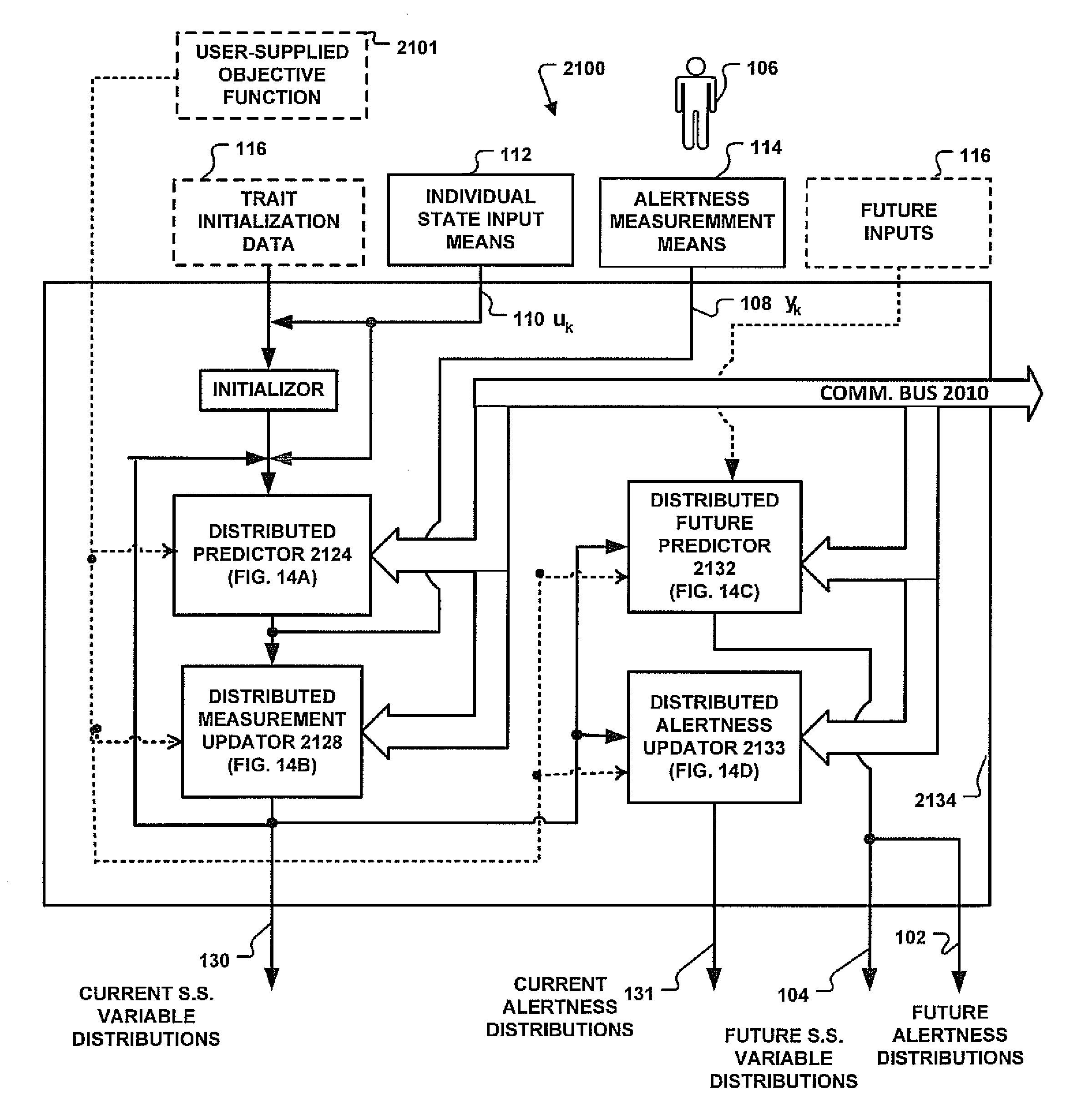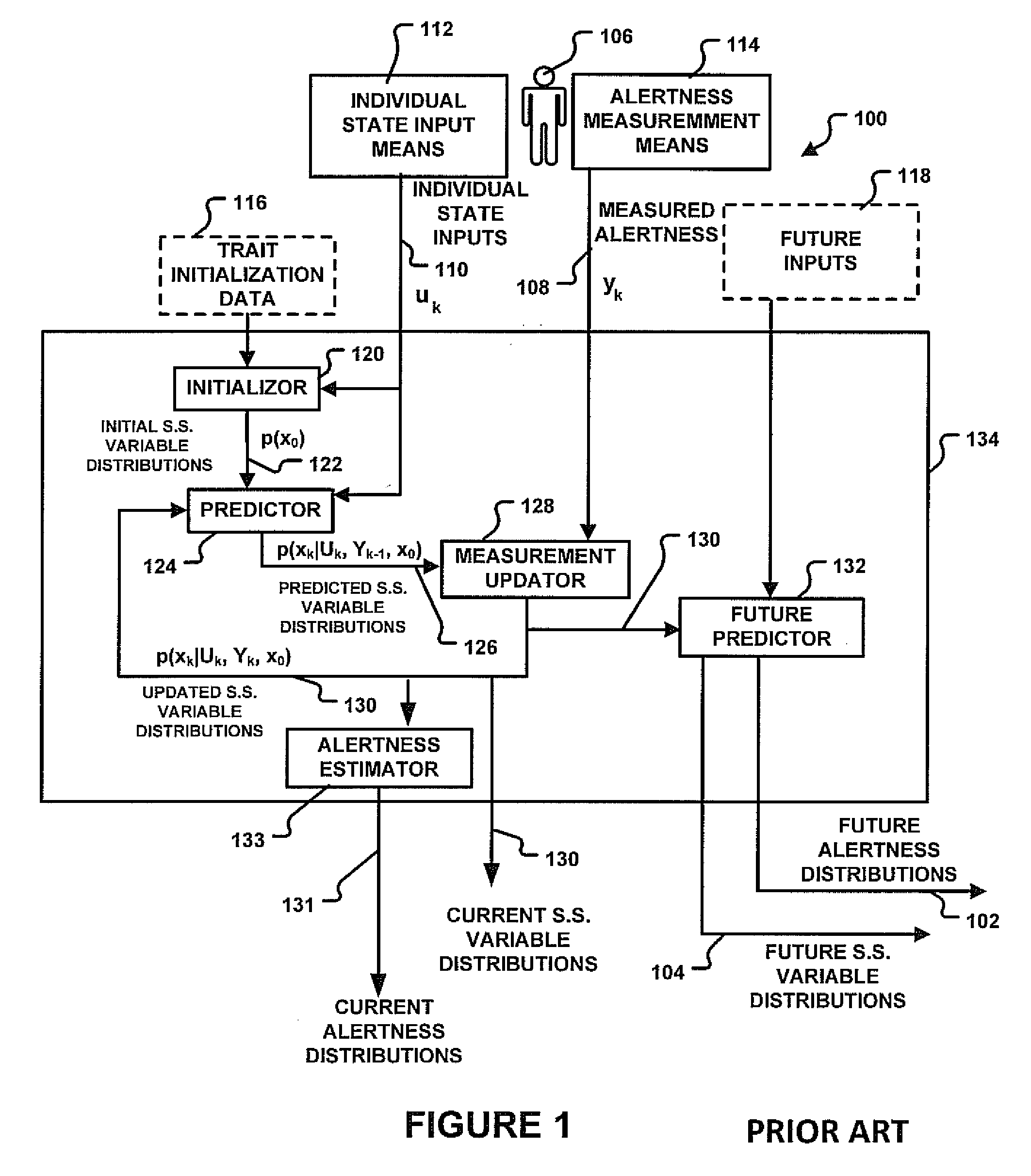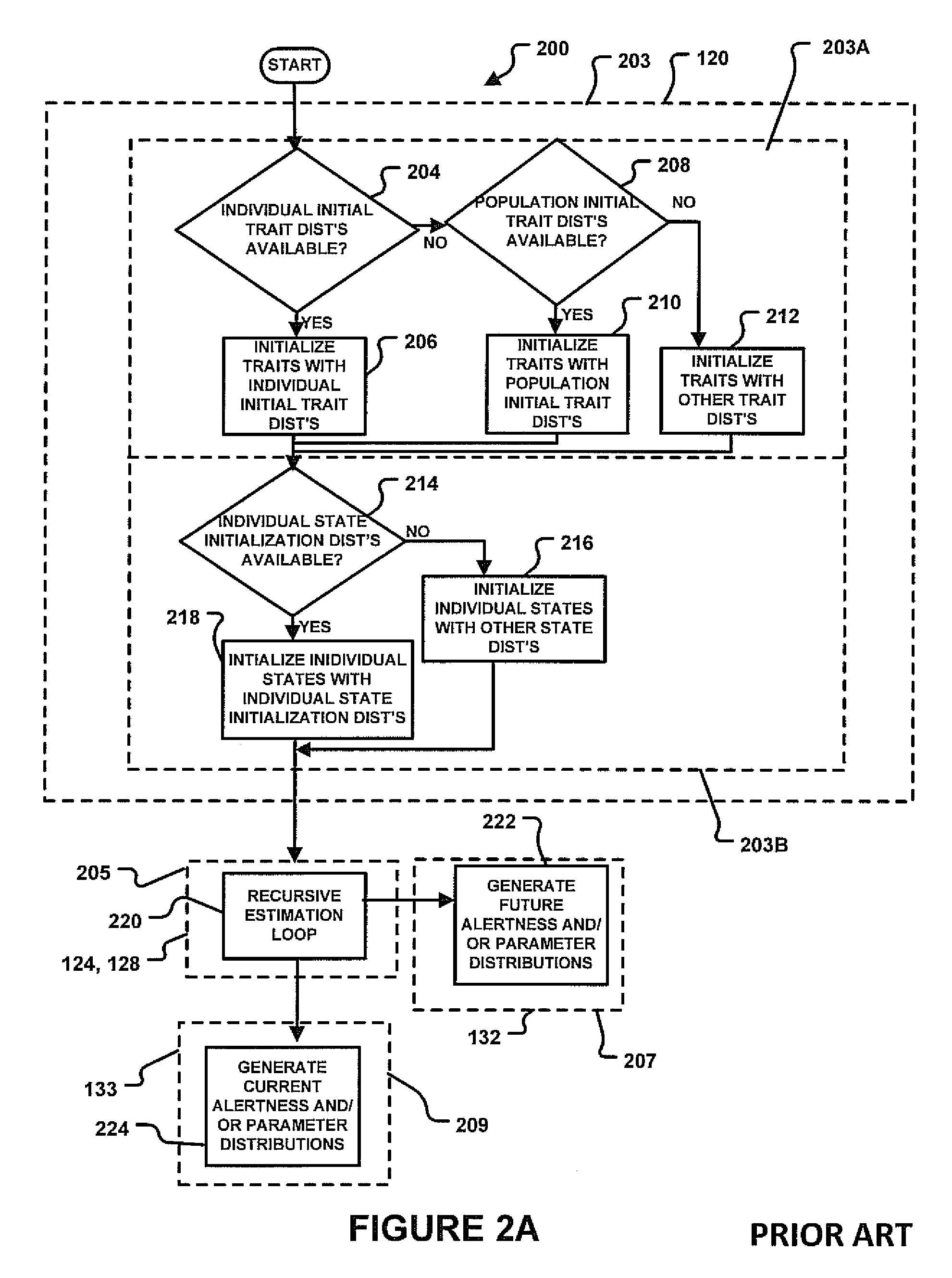Systems and Methods for Distributed Calculation of Fatigue-Risk Prediction and Optimization
a distributed calculation and optimization technology, applied in the field of human fatigue detection, measurement and management, can solve the problem of increasing the computational workload for accurate prediction
- Summary
- Abstract
- Description
- Claims
- Application Information
AI Technical Summary
Benefits of technology
Problems solved by technology
Method used
Image
Examples
Embodiment Construction
[0028]Throughout the following description, specific details are set forth in order to provide a more thorough understanding of the invention. However, the invention may be practiced without these particulars. In other instances, well known elements have not been shown or described in detail to avoid unnecessarily obscuring the invention. Accordingly, the specification and drawings are to be regarded in an illustrative, rather than a restrictive, sense.
[0029]To aid in comprehension and understanding of the presently disclosed invention, the following discussion is organized into three parts. In Part I, an overview is provided of the methods used to conduct fatigue-risk calculations through a distributed computer network. Part II explores a specific model of human fatigue in depth, thereby providing insight into the types of mathematical and computational problems that are associated with fatigue-risk calculations. And Part III returns to the distributed computing model by disclosing...
PUM
 Login to View More
Login to View More Abstract
Description
Claims
Application Information
 Login to View More
Login to View More - R&D
- Intellectual Property
- Life Sciences
- Materials
- Tech Scout
- Unparalleled Data Quality
- Higher Quality Content
- 60% Fewer Hallucinations
Browse by: Latest US Patents, China's latest patents, Technical Efficacy Thesaurus, Application Domain, Technology Topic, Popular Technical Reports.
© 2025 PatSnap. All rights reserved.Legal|Privacy policy|Modern Slavery Act Transparency Statement|Sitemap|About US| Contact US: help@patsnap.com



